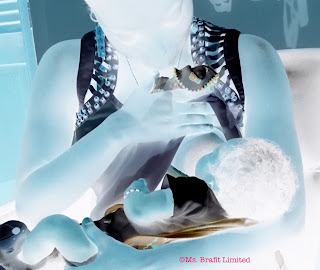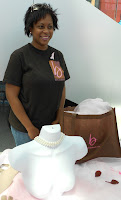Healthy Populations via Healthy Breasts
In Celebration of World Population Day
In our many years of experience and
as Thought-Leaders in Breast-Care, Bra-Fitting and Mastectomy-Care, we enjoy
taking care of women and girls via the foundation garment as an engine for
empowerment and social change.
 |
| Feeding the Future |
Having designed and developed comprehensive education models, programs and toolkits to assist with discussions and education surrounding breast health and breast care, we have often sought to incorporate audiences of adolescents, young women, boys and men, in order to begin to truly amplify the voice of women and girls’ (reproductive) health and self care, to ensure that we transcend all age groups and gender barriers (Goal #5). Taking into consideration that girls are the emerging women of our world.
Today, on World Population Day, it
is a great opportunity to reflect on the importance of healthy breasts as a
source of our global food supply and nutrition of the world’s under 3 years of
age populations.
Nutrition, food supply and
nourishment are critical to ending hunger (Goal #2) as part of the global
Sustainable Development Goals agenda.
Breast milk, still remains the
primary and natural source of nourishment for the newborn child and plays a key
role in the nutrition of our global emerging populations.
During puberty, girls begin to see changes in their bodies and one such is the development of breast tissue.
During mensuration, girls also
experience many discomforts with the breasts that are after all closely linked
to the reproductive cycle.
Breast ailments (cancers) account for a
great percentage of mortality in populations and in most cases, early-detection
debates rage as to how early is “too early” and what forms of screening should
be available to women and girls based on their age categories and
predisposition.
As these debates continue to rage
on, we see many new diagnoses and at even earlier ages, in girls, younger women
(and men) of diverse demographics (ethnicity,
culture, economics) and with no predisposition in many instances.
Parallel to the debates, are the arguments
about “what is the appropriate age for screening” including when should a girl
begin having discussions about her breast health and access to screening (including
self breast examinations) without inciting rage over a very taboo discussion in
some geographic areas and cultural settings.
However, whilst this debate
continues raging on, there is a very important matter that still remains unsettled.
The direct
connectivity between healthy breasts and healthy populations, healthy workforces,
healthy food supplies, healthy environments and healthy economies.
How do they
connect and correlate?
If the
world wants to own healthy populations, we all have to actively participate in
open dialogues surrounding healthy breasts, as a major component in
reproductive health discussions. Further, it should be a key component in
adolescent health and global maternal health.
Our role
and missions at Ms. Brafit (www.msbrafit.com), have actively engaged Goal #3 as
a part of our work and everyday activities, both in our roles as Breast-Care
Specialists and as Advocates.
If the
world is to benefit from healthy economies (Goals#1 and #8), we are also
collectively expected to speak about the social-impact that early-detection and
treatment can have on the productivity in the workforce, time off from work,
impact on the human resources and most of all, the wage bill and national
insurance bills.
In addition
to these very significant challenges, it is also critical to understand the
number of children orphaned and families that are affected by an instance of
breast health as a catalyst to mortality (Goals #10 & #11).
While the
world continues to strive for health as one of the Sustainable Development
Goals and we all continue to celebrate achievements in medicine and health
breakthroughs, today is a good day and a great opportunity to invite you to
join our mission of engaging in the discussion of giving dignity to adolescent
girls by engaging in a healthy and constructive dialogue and education
programming (Goal #4) about comfort, early detection and self-breast examinations.
Join in our
dialogues and education about collaboration for social change, amplifying the
messages of healthy breasts as a source for food security and healthy nations
(Goal #17).
Ms. Brafit®
– Two Cups of Care Program
Ms. Brafit®
– Comfort Matters Seminar Series







Comments
Post a Comment